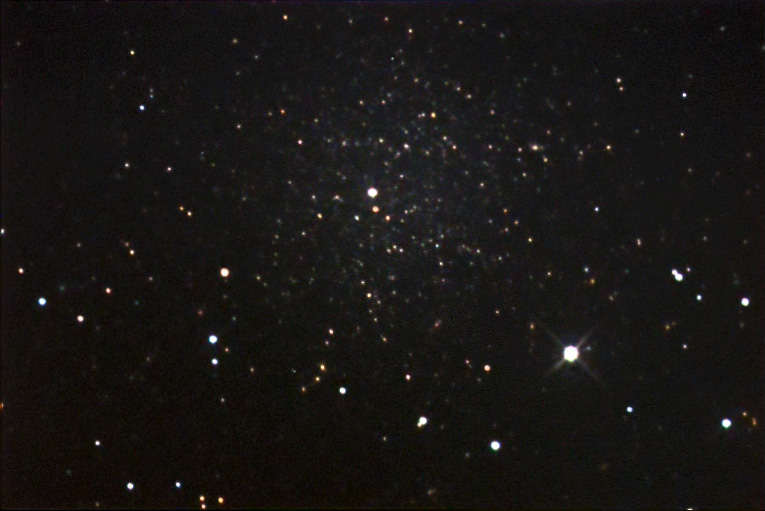 Here is another example of trying to get a satisfactory color image of a very dim and challenging object. Leo II is 1.5 magnitudes fainter than its sibling Leo I , and does not suffer the proximity of a brilliant first magnitude star like Regulus plagues Leo I. This object, Leo II is listed at a magnitude of 12, however is spread out over 12 arcmins and is not observable visually. It is closer than Leo I - 250pc at a distance of 210 pc. That is just outside the outer spiral arms of our Milky Way. The stars in Leo II are arranged in "curvilinear branches". You can see the orange stars forming chains and loops. This is what globular clusters do, and you could consider Leo II a super gigantic globular floating in intergalactic space. A final note on the composition of this image. According to Megastar, the exact center of Leo II is around that orange star just below the bright white star in Leo II's core. That's what I centered, since the object was completely invisible in the focus exposures. Leo II, is apparently above that, more centered on the white star. That's why the main body of the galaxy is above center in this image. Instrument: 12.5" f/5 Home made Newtonian Platform: Astrophysics 1200 QMD CCD Camera: SBIG ST7E w/Enhanced Cooling Exposure: LRGB = 60:20:20:36 (RGB Binned 2x2) Filters: RGB Tricolor Location: Payson, Arizona Elevation: 5150 ft. Sky: Seeing FMHW = 2.3 arcsec, Transparency 6/10 Outside Temperature: 10 C CCD Temperature: -25 C Processing: Maxim DL, Photoshop, AIP4WIN, PW Pro.
|
||
|
|
||
|
FastCounter by bCentral |